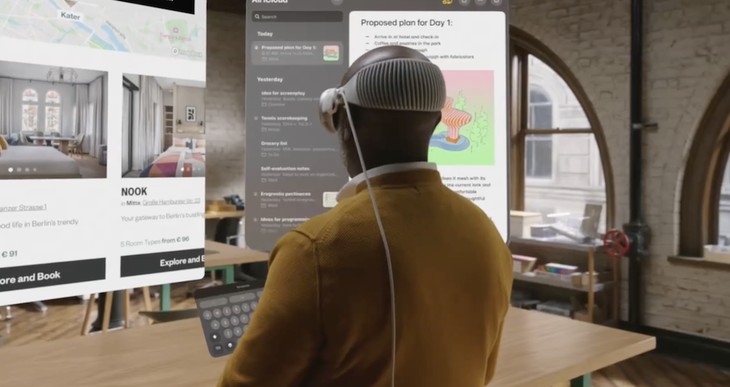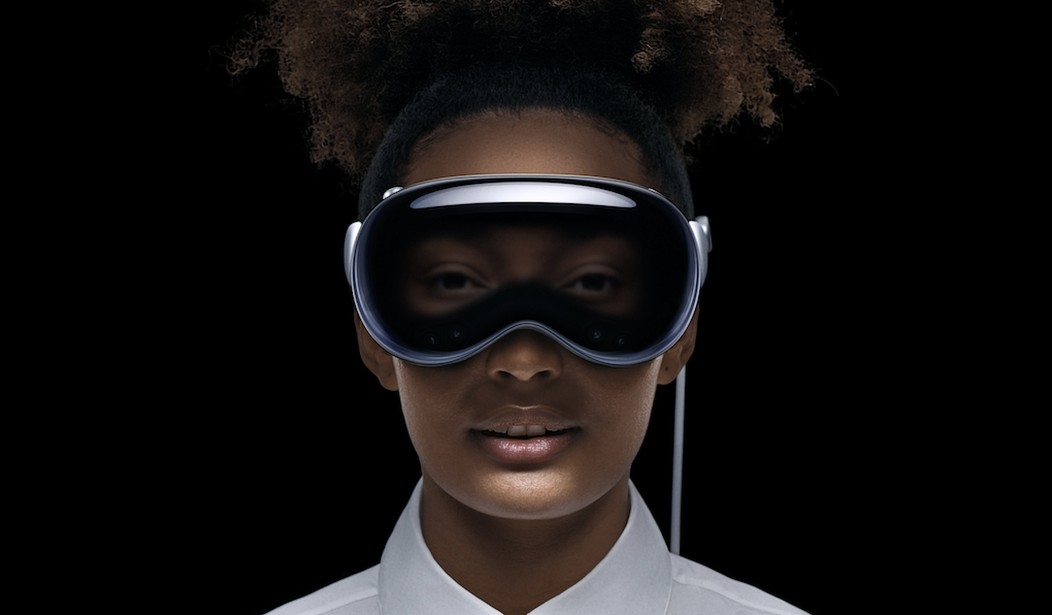Apple Vision Pro is probably the nicest piece of large hardware you can strap to your face. But who would want to do that—for the jaw-dropping price of $3,499 (and presumably up for things like extra storage)—is a question left unanswered during the company’s 2023 Worldwide Developer Conference (WWDC) keynote address on Monday.
There are two questions a company needs to ask itself and answer for its customers when entering the market for a new device category: What is it, and who is it for?
I can answer the first one for you. The second one remains a mystery that we’ll explore in just a moment.
What is the Vision Pro? Available “early next year,” it’s an augmented reality headset running a new operating system called visionOS, allowing wearers to work and play in an environment that Apple calls “spatial computing.” Users—who I’ll sometimes refer to as wearers—see an interface familiar to smartphone owners, but rendered in photorealistic 3D and hovering in simulated realspace. You see the environment you’re in, but you also see the apps, widgets, and data you’re using. The computer functions in this augmented reality by using your eyes to select options and simple finger gestures the same way you’d use multitouch on a smartphone.
Very nifty: At least one of the Vision Pro’s motion-detection cameras aims down so you can motion your fingers discreetly instead of waving your hands all around the air in front of you like Tom Cruise in Minority Report. No gloves are required.
There’s a lot of hardware packed into the headset, including a top-of-the-line M2 laptop chip, multiple cameras, a LIDAR sensor, and enough graphics horsepower to move 23 million OLED pixels across stereoscopic screens at a high refresh rate. For sound, users are treated to immersive Dolby Atmos speakers. For comfort, a soft, sock-like head strap fixes the face-computer in place.
A power cable runs down behind a wearer’s left ear to a small battery pack that’s supposed to deliver two hours of mobile use. For all-day use, some kind of power brick is required.
Maybe the niftiest feature is the ability to choose the level of augmented reality you’ll see. Using a watch-like digital crown near the right temple, you can dial in how much of the real world to let through or how much to block out. On a similar note, a passthrough mode called EyeSight allows people around you to see your eyes, albeit as though you’re wearing darkened scuba goggles.
That brings us to the rub.
Recommended: UKRAINE WAR: Go Home, Everybody, Russia Already Countered the Counteroffensive
The Wall Street Journal’s Joanna Stern, who got to wear a Vision Pro yesterday as part of a WWDC demo, wrote after trying it out that “Maybe the office is actually better in a face computer.” But with people moving back into the real office after COVID, why bother? If users have to be tethered to a power cable after the first two hours of use, why not just use a MacBook, which is just as mobile, cheaper, and has a 15-hour battery life?
If you’re going to build pro-level hardware and charge pro-level prices (Apple’s $3,499 is in line with competing pro-level products from Microsoft and Magic Leap), then you’d better make a pro-level marketing pitch. Instead, the Cupertino computing-and-electronics giant mostly shows users using Vision Pro to do consumer-level activities. They’re watching movies on a virtual IMAX-sized screen outdoors by a lake, a family FaceTime call with that purple-haired aunt, taking and editing 3D photos with their goggles, or playing 3D games in the living room.

The office professional shown on Apple’s Vision page is using visionOS apps not much different from their macOS equivalents, just bigger and floatier.
If, for example, I’m a video editor who lives and breathes in Apple’s Final Cut, what benefit does working in the visionOS environment bring me? The company has yet to compellingly answer that question. For $3,499, they’d better come up with a very good answer before Vision Pro goes on sale.
I’m reminded a bit of the Apple Watch, which only turned out to be a huge success after Cupertino finally figured out what the Watch was supposed to be — thanks to input from early adopters. The first generation or two of the watchOS operating system and the marketing positioned it as an all-in-one communications device. It sold well enough but didn’t really take off until Apple tailored the OS and the marketing to the way people actually used it: As a well-made, cleverly designed, and fashionable fitness and reminders gadget.
I don’t think Apple itself knows how people will actually use Vision Pro—and the mismatch between the hardware and the early marketing shows that.
Similarly, the “Pro” moniker indicates that Apple intends to release a non-pro version in the future, with reduced hardware and a less jaw-dropping price. The section of the company’s website dedicated to the headset is simply labeled “Vision.”
When Apple comes out with the just plain Vision—or, better yet, a super-lightweight Vision Air—at a price not much higher than their bestselling MacBook Air laptop, then I think they’ll have a hit on their hands.
Until then, or until the Pro’s use case matches its price, I suspect Vision Pro might be limited to well-paid pros who enjoy playing with cutting-edge consumer gadgets.










Join the conversation as a VIP Member